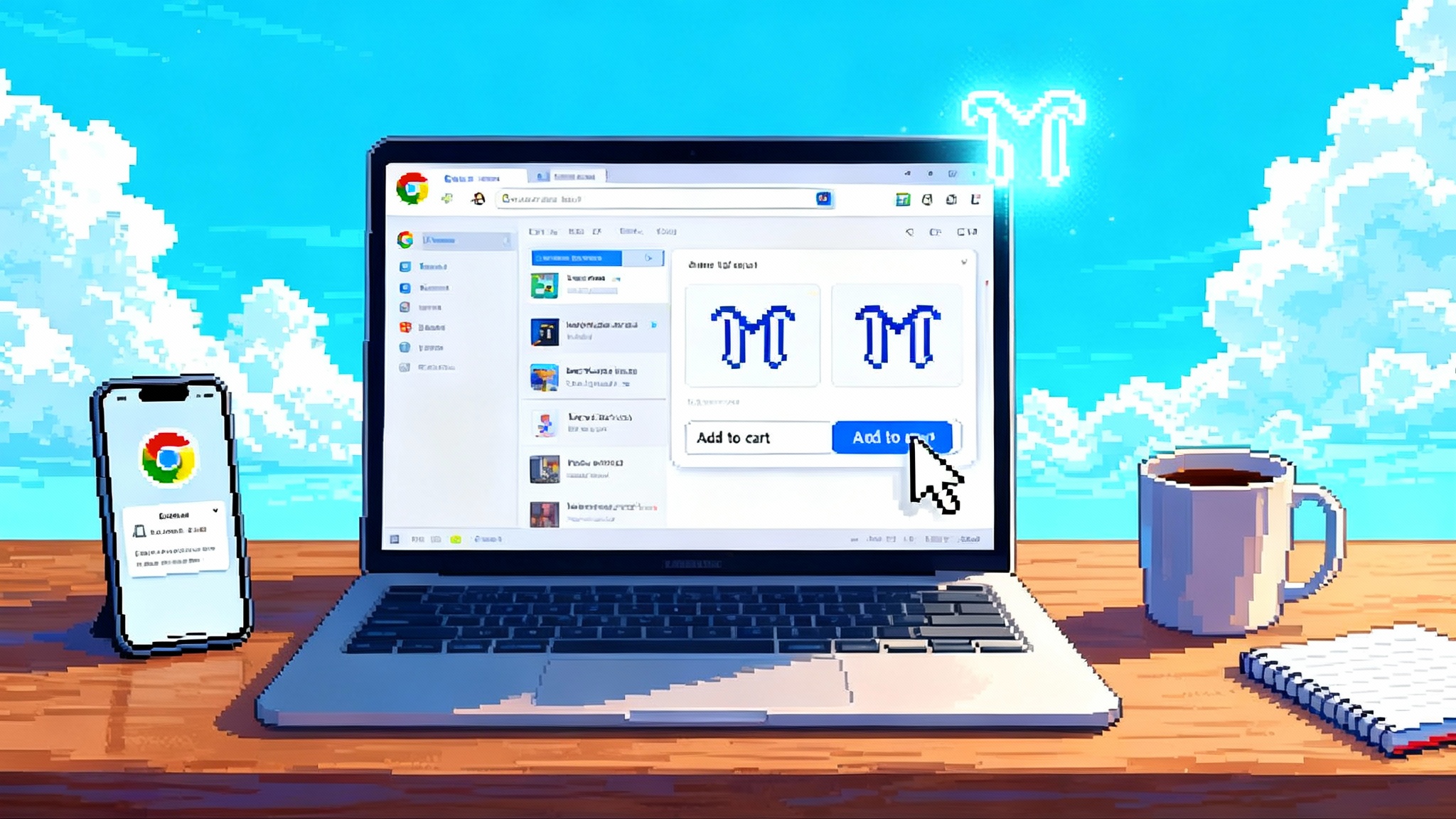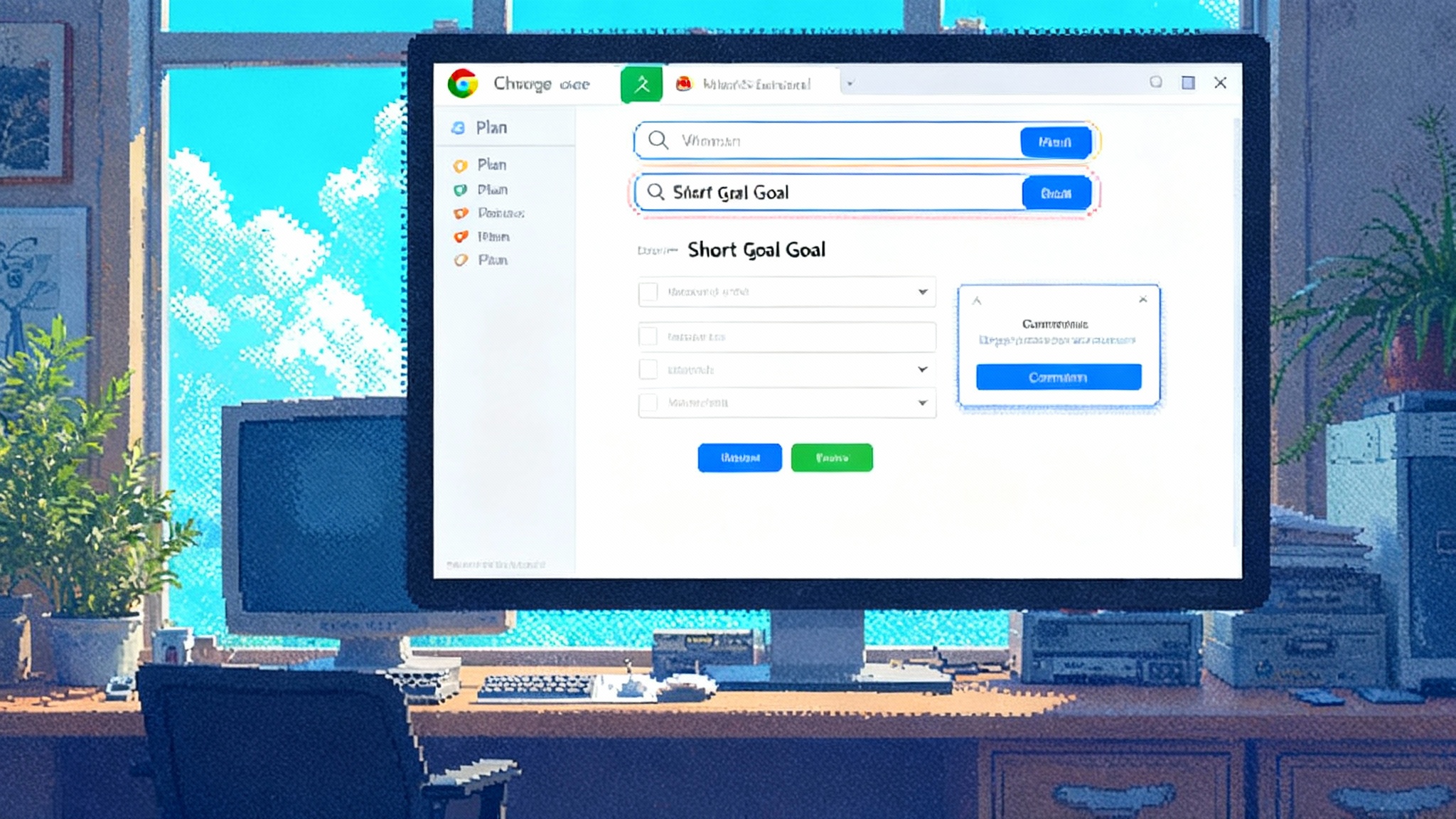Gemini in Chrome makes agentic browsing mainstream at last
Google’s September rollout of Gemini inside Chrome is the moment agentic browsing jumps from demo to default. Here is what tab‑aware synthesis and upcoming multi‑step, cursor‑driven automation mean for search, ecommerce, privacy, extensions, and your roadmap.

The moment agentic browsing crossed the chasm
On September 18–19, 2025, Google began rolling out Gemini directly inside Chrome for U.S. desktop users in English. A small Gemini button now lives in the browser chrome, and a smarter address bar brings AI Mode into the omnibox. In Google’s own framing, Chrome is entering an AI era where the browser understands the page you are on, the tabs you have open, and soon the tasks you want done. The company spells out the core features and the near term roadmap in its official announcement, including multi tab context, AI Mode in the address bar, and upcoming multi step agents that can complete chores like ordering groceries with your approval. That is the clearest signal yet that agentic browsing is going mainstream, because it is arriving where everyday users already live: Chrome. See Google’s description of these features in Chrome reimagined with AI.
Two ideas drive this shift:
- Tab aware synthesis. Chrome lets Gemini read the room across what you have open, pull details from the current page, and synthesize comparisons or summaries without you juggling copy and paste.
- Cursor driven automation. Over the coming months, Gemini will take constrained actions on web pages. Think of the agent moving a virtual cursor, clicking buttons, and filling forms in sequence, pausing for your confirmation before anything irreversible.
If you run a site that depends on search traffic or funnels, this is not a small tweak. It is a new default.
What tab aware synthesis changes in search and discovery
Most people do not search in a vacuum. They open a handful of tabs, skim, bounce back to results, and try again. Tab aware synthesis compresses that loop inside the browser.
- The query shifts from the web to the page. Instead of hopping back to a search box, users can ask on page questions. The question is grounded in what is visible, so answers tend to be more precise and less generic.
- Multi tab comparisons move inside Chrome. Product research that used to create ten tab avalanches now collapses into a single dialogue. Expect many top of funnel interactions to stay inside the browser UI.
- Follow ups become the norm. AI Mode in the omnibox accepts long, specific prompts and supports conversational follow ups. This upgrades the address bar from a navigational tool to a research surface.
Implications for search behavior:
- Fewer blue link clicks for generic queries. A chunk of informational lookups will resolve in browser. Your job is to make sure the in browser summary prefers your structured statements and your brand language.
- Rich results move from SERP to browser chrome. Familiar snippets, FAQs, and comparison tables may appear via AI Mode rather than a search results page. The audience is still there, but the surface has moved.
- Intent detection gets sharper. Tab context narrows ambiguity. If a user is reading mid range mirrorless camera reviews, the next question about lens compatibility will not look like a blank slate query.
What to do now:
- Strengthen structured data. Use schema.org with complete, accurate fields for products, prices, availability, specs, how to steps, and FAQ. Agents eat structure first.
- Author definitive comparison claims. Provide explicit, machine readable deltas like battery life, weight, and warranty. Write them in clean tables near the top of the page so summarization has something canonical to lift.
- Treat headings as prompts. The first 100 words under each H2 should make a standalone, quotable claim that an agent can reuse without distortion.
Cursor driven automation will rewrite ecommerce funnels
Google says Chrome’s agent will soon complete multi step tasks with a pause for approval before irreversible actions. In practice that means the agent will navigate a store, choose variants, add to cart, and present a final screen for you to confirm payment. That is a new buyer archetype: the agent assisted shopper.
What changes in your funnel:
- Merch pages become machine interfaces. Agents must map size, color, inventory, shipping windows, and returns. If your add to cart flow depends on brittle scripts or hidden selectors, automation will fail. Prefer stable IDs and semantic HTML the agent can interpret.
- Checkout shifts to two stages. Stage one is agent pre fill of customer details and shipping options. Stage two is human confirm and pay. Optimize both for speed and clarity.
- Bundling and replenishment get easier. Agents can reconcile wishlists, price drops, and order histories to assemble carts aligned with constraints like budget or dietary rules. Merchandising logic should expose bundles and substitutions in a structured way.
Guardrails to add:
- Confirmations before charge. Always require an explicit human click to pay and to sign any terms of service. The agent can do the legwork, but the person must commit.
- Itemized diff for edits. When the agent revises a cart, show a clear delta with quantity and price changes, then ask for confirmation again.
- Idempotent endpoints for cart updates. This avoids duplicates when the agent retries after a network hiccup.
Payments and antifraud:
- Support Payment Request API and major accelerated options. Agents can populate most fields, but the final click should ride a secure, standards based flow.
- Favor behavioral checks over CAPTCHAs. CAPTCHAs will frustrate agent flows and humans. Use device signals, velocity checks, and step up only when risk scores warrant it.
Privacy and policy in an agent first browser
An on device assistant that reads the current tab and a handful of others raises normal questions: what is the model seeing, where is that context processed, and how do sites consent to automation. Google’s announcement highlights safety features like scam detection and a pause before irreversible actions. It also positions the agent as something you control rather than a background crawler.
For site owners and policy teams:
- Update acceptable use to cover agent assistance. Many terms ban automated access outright. Clarify that human in the loop agent activity for personal use is permitted while bulk scraping and resale are not.
- Publish an automation policy page. Explain what is allowed, what is rate limited, and which flows require a human click. This reduces friction with good actors.
- Scope data retention. If the agent uploads files or screenshots to complete a task, disclose how long they are retained and who can access them. Mirror consent banners in agent friendly language.
- Consider an actions allowlist. If you operate in a regulated space, enumerate the specific actions agents may perform, like booking a consultation, but not altering medical records.
Chrome extensions and the coming agent layer
This is the biggest strategic jolt to the extension ecosystem since Manifest V3. Many popular extensions do three things that agents will natively handle: summarize pages, autofill forms, and compare products. That sounds scary for developers, but it also opens a new market.
- Extensions become action providers. The browser agent needs verbs it can call. If your extension books travel, files expenses, or annotates video, expose those capabilities as explicit actions with parameters the agent can discover.
- UX moves upstream. Instead of drawing new UI chrome, design intents and results that flow through the agent’s conversation. Think “create expense report from these tabs” rather than a side panel full of toggles.
- Enterprise value grows. Admins will favor extensions that advertise safe, auditable actions with clear scopes. Logging and policy control become selling points.
Pragmatic steps for extension teams:
- Define an actions manifest. Even before a formal standard exists, publish a JSON manifest that lists each action, its parameters, authentication needs, and expected outputs.
- Ship an OpenAPI spec for your service endpoints. This gives agents a machine readable contract and a stable surface to call.
- Add structured data to the pages you touch. If you transform content, keep semantic cues so summarizers do not strip away meaning.
How Google’s approach stacks up against the other agents
OpenAI’s Deep Research is the clearest comparator. Deep Research is a long running, autonomous browsing capability inside ChatGPT that spends minutes traversing sources and producing a cited report. OpenAI describes it as a multi step research agent optimized for web reasoning, with thoughtful limits and staged access. See the company’s write up in Introducing deep research.
- Product surface. Deep Research lives inside a chat app and runs asynchronously, often taking 5 to 30 minutes. Gemini in Chrome lives in the browser you already use and responds in line while you read or shop.
- Primary job. Deep Research excels at exhaustive synthesis and citations for complex questions. Gemini in Chrome is tuned for contextual help, quick comparisons, and near term task completion with user in the loop.
- Execution model. Deep Research primarily reads and writes. Google’s roadmap brings write and act. Cursor level automation means it will click buttons and fill forms with pause points for user approval.
- Trust posture. Deep Research’s output ships with documentation and explicit citations. Chrome leans on page context, upcoming agent confirmations, and browser security features to keep the person in control.
DeepMind’s Project Mariner is the other relevant thread. Mariner is a research prototype focused on computer use in browsers. It observes the screen, plans, and acts across multiple steps, and in recent iterations can juggle several tasks at once. The interesting part is not the brand name, but the architectural pattern that now shows up in Chrome’s roadmap: screen grounded reasoning plus cursor level action with user checkpoints. The boundary between research agent and consumer browser is shrinking fast.
A pragmatic playbook for teams
Think of the agent as a new kind of user who behaves like a power assistant sitting next to your customer. Your job is to make that assistant competent and safe on your site.
- Expose actions to agents
- Publish an actions manifest. List the tasks your site supports, like add_to_cart, check_store_inventory, schedule_appointment, start_return. Document parameters, preconditions, and side effects.
- Provide clean, authenticated endpoints. Offer REST or GraphQL APIs for critical actions. Support short lived, scoped tokens and rotate them frequently.
- Keep a semantic DOM. Use stable element IDs and ARIA roles. Avoid brittle CSS driven flows that change on every deploy.
- Offer test sandboxes. Give agents a safe environment with fake cards and staged inventory so they can learn your flows without risk.
- Add structured data and guardrails
- Use schema.org at depth. Product, Offer, AggregateRating, HowTo, FAQ, Event, and JobPosting are low hanging fruit. Keep priceCurrency, availability, and variant attributes accurate.
- Put machine readable constraints on page. For example, expose min_order_quantity or delivery_cutoff_time in data attributes the agent can read.
- Build explicit confirmation steps. Create a summary screen that lists items, prices, shipping, and terms with a single human confirm. Log the human approval as its own event.
- Protect sensitive flows. Require user reauth for account changes, exports, or deletions. Present a clear reason the agent can relay to the user.
- Redesign checkout and customer service for agent traffic
- Split flows into prepare and confirm. Let the agent prepare everything, then keep the human decision simple. Remove optional fields and collapse steps.
- Offer resilient variant selection. Ensure sizes, colors, and add ons are selectable in predictable ways. Expose out of stock reasons so agents can propose substitutions.
- Add agent friendly help endpoints. Provide a small set of support actions like check_order_status and request_return_label with clear rules on eligibility and limits.
- Train agents with playbooks. Publish task recipes that describe how to succeed on your site. Keep them short and unambiguous.
- Measure ROI in an agent first web
- Instrument agent sessions. Create a server side dimension that flags requests that trigger action endpoints or arrive with your action tokens. Attribute downstream conversions to these sessions.
- Use behavioral heuristics carefully. Fast, perfectly sequential field completions are a hint, not proof. Combine with endpoint usage and referrers.
- Run holdouts. Randomly withhold agent hints or action endpoints for a small control group to estimate lift on conversion speed and completion rate.
- Track the right KPIs. Measure time to task completion, confirmation rate after agent prep, error recovery rate, and downstream returns or cancellations. These are stronger than raw pageviews.
- Prepare for policy and security reviews
- Document your automation policy. Keep a page that explains allowed behaviors and contact info for agent developers.
- Keep audit trails. Log every agent initiated action with timestamps, parameters, and human confirmations. Make deletion and export easy for users.
- Plan for revocation. Build kill switches for compromised tokens and an allowlist for agents you trust.
What to watch next
- Agent marketplaces. As actions become a first class concept, expect directories where agents can discover site capabilities and request access.
- Extension evolution. The best extensions will pivot into action providers with enterprise grade logging and policies.
- New analytics surfaces. Chrome and other browsers may add agent aware telemetry and consent flows that standardize measurement. Treat anything proprietary as a bonus, not a dependency.
- Regulatory clarity. Expect guidance on disclosures, consent, and accountability for agent actions, especially for purchases and contracts.
The browser is becoming an agent runtime. Chrome’s Gemini rollout accelerates that shift by putting synthesis and soon action in the flow of everyday browsing. You do not need to chase every headline. Do the simple, durable things now. Publish clear actions. Add deep structure. Put safety rails around payment and account changes. Then measure whether agent prepared sessions reduce friction and raise conversion. If you make the assistant on your customer’s shoulder smarter and safer, the rest tends to follow.



